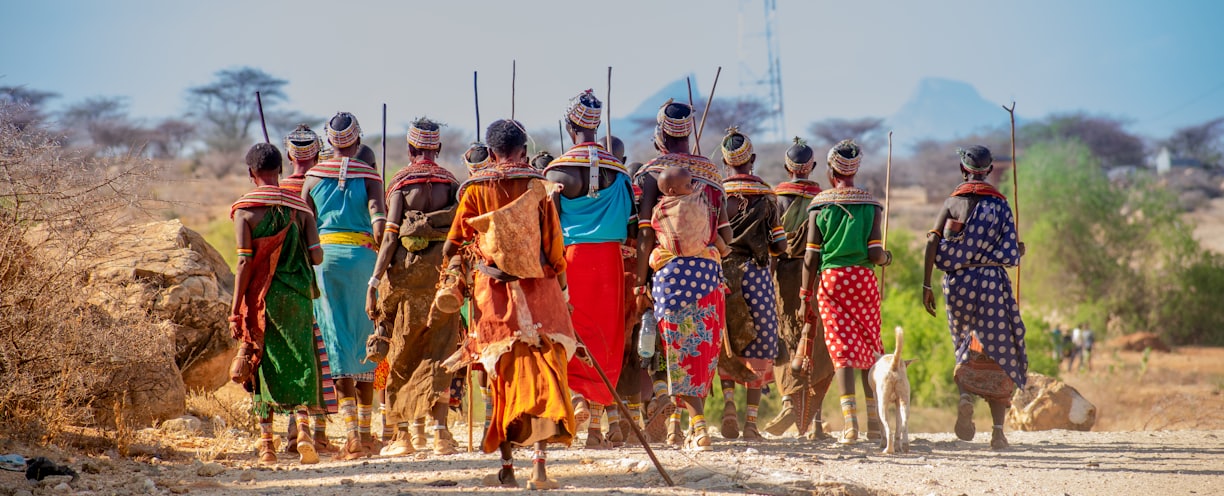Dahomey Amazons
In line with the theme of the month, we shall today examine the elite military group of female warriors called the Dahomey Amazons. They were frontline soldiers in the army of the Kingdom of Dahomey, a West African empire that existed from 1625 to 1894. Its remnants lie in modern-day Benin, which occupies a sliver of the coast between Nigeria and Togo. Whether conquering neighbouring tribes or resisting European forces, the Amazons were known for their fearlessness. In one of the final battles against the French in 1892, before the kingdom became a French colony, it is said only 17 out of 434 Amazons came back alive.
AFRICAN HISTORY


In line with the theme of the month, we shall today examine the elite military group of female warriors called the Dahomey Amazons. They were frontline soldiers in the army of the Kingdom of Dahomey, a West African empire that existed from 1625 to 1894. Its remnants lie in modern-day Benin, which occupies a sliver of the coast between Nigeria and Togo. Whether conquering neighbouring tribes or resisting European forces, the Amazons were known for their fearlessness. In one of the final battles against the French in 1892, before the kingdom became a French colony, it is said only 17 out of 434 Amazons came back alive.
According to legend, Queen Hangbe, who according to local legend is the founder of the Amazons, an elite group of female warriors, assumed the throne in the early 18th Century after the sudden death of her twin brother, Akaba. After a short rule, she was forcibly deposed by her power-hungry younger brother, Agaja. The current Queen Hangbe told me that all traces of her ancestor’s reign were erased by Agaja, who believed that only men should hold the throne. In a dusty museum that lies within the walls of the Royal Palaces in Abomey, the monarchs’ elaborate bronze sceptres are displayed in order of their reign. There is no sign of one belonging to Hangbe, and some historians question whether she existed at all.
Yet her legacy lived on through her mighty female soldiers. Oral and written accounts differ over the origins of the women-only corps. Some sources describe the Amazons as elephant hunters who graduated to human prey. The more widely accepted theory is that they served as royal bodyguards to Hangbe and the kings who came after. These fearless warrior women are the inspiration behind the Dora Milage in the movie Black Panther.
It was King Ghezo, who ruled over Dahomey from 1818 to 1858, who officially integrated the Amazons into the army. This in part was a practical decision, as manpower was increasingly scarce due to the European slave trade.
The recognition of the Amazons as official soldiers of Dahomey strengthened a duality that was already embedded in the society through the kingdom's religion, which has since developed into Vodun, now one of Benin’s official religions and the basis of voodoo. An integral legend told of Mawu-Lisa, a male and female god who came together to create the universe. In all institutions, political, religious and military, men would have a female equivalent. The king, however, reigned supreme.
Historical accounts of the Amazons are notoriously unreliable, though several European slave traders, missionaries and colonialists recorded their encounters with the fearless women. In 1861, Italian priest Francesco Borghero described an army exercise where thousands of women scaled 120m-high thorny acacia bushes barefoot without a whimper. In 1889, French colonial administrator Jean Bayol described witnessing one young Amazon approach a captive as part of her training. "[She] walked jauntily up, swung her sword three times with both hands, then calmly cut the last flesh that attached the head to the trunk… She then squeezed the blood off her weapon and swallowed it."
Europeans who visited the kingdom in the 19th Century called Dahomey’s female fighters Amazons after the ruthless warriors of Greek mythology. Today, historians refer to them as mino, which can be translated as ‘our mothers’ in the local Fon language.
